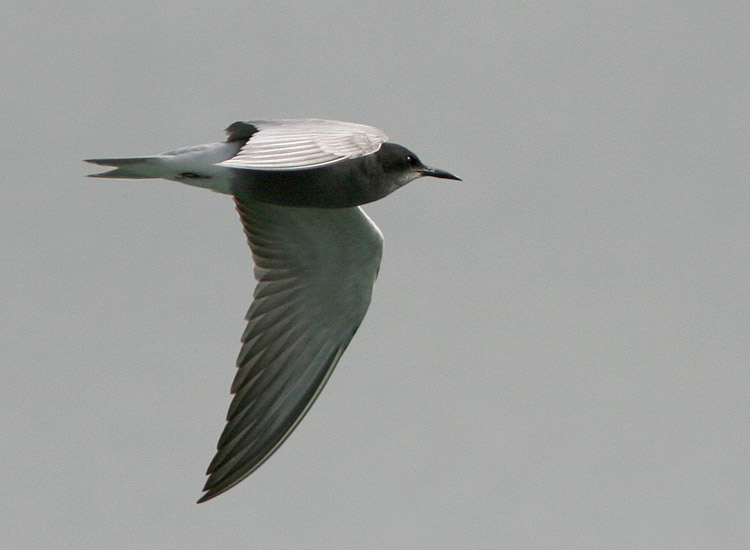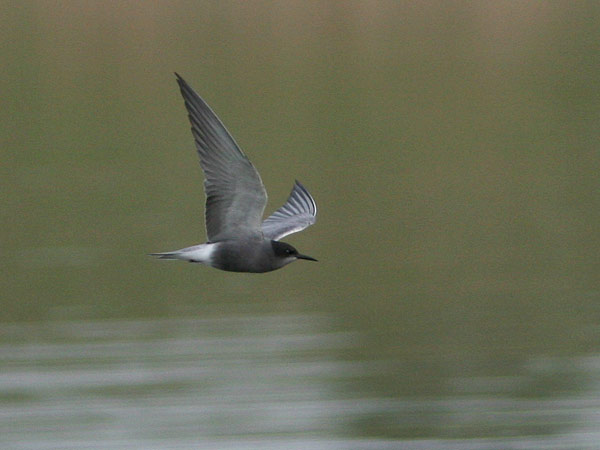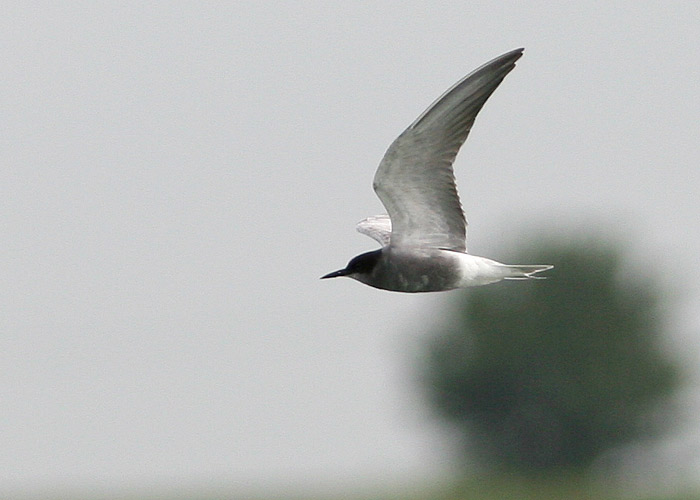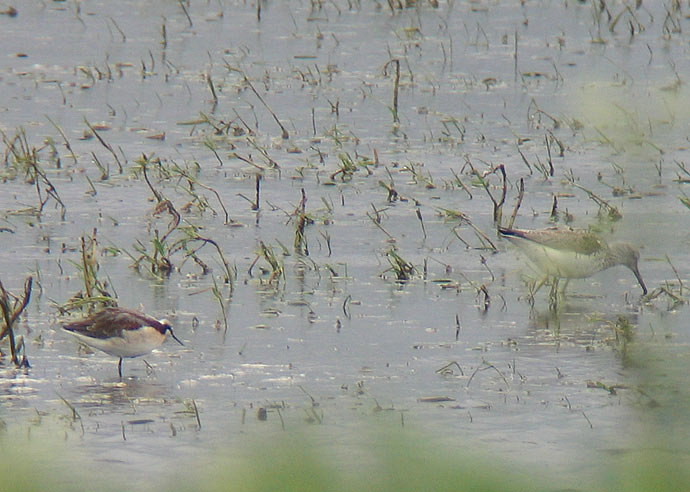
Sanderling, Maxey pits, 22.5.07
I've been visiting Maxey pits on Etton Road very regularly this spring. It is the closest thing I have to my own patch, though one I share with a few other regulars. I love waders, and it was obvious after last autumn's performance, continuing into mid-winter, that this spring was going to come up with some goodies.
After a slow start, during which breeding plovers arrived plus a few Green Sandpipers and Redshanks and Dunlin, plus a few thousand Golden Plovers and Lapwings, things started to show promise with the arrival of a pair of Avocets looked like thgey wanted to stay and breed. They didn't even last into a second day.
It was not long after, though that the massive Bar-tailed Godwit surge occurred, after which the floodgates have opened and as of mid-May, haven't quite stopped.
This spring the pits have had (counts as a minimum) the following 25 species of waders:
Turnstone, 5, (inc 3 together),
Avocet, 4 (2 pairs),
Oystercatcher, up to a few at a time,
Grey Plover, 1, (arrived same day as Knot, in winter plumage),
Little Ringed Plover,
Ringed Plover,
Ringed Plover of race tundrae, max flock of 20,
Golden Plover, max flock of 2,000 with the last single on 12.5.07,
Lapwing, several pairs with chicks,
Ruff, flock of 8 (1 male),
Knot, 1 (summer plumage),
Sanderling, 6 (inc 3 together),
Dunlin, max flock of 41,
Curlew Sandpiper, 1,
Common Sandpiper, max count of 3,
Green Sandpiper, max count of ?9,
Wood Sandpiper, 1,
Greenshank, up to 2 at a time,
Redshank, max count of ?8
Spotted Redshank, 1, (seen by Bob Titman et al).
Bar-tailed Godwit, 50+, (inc flocks of 22 and 26),
Black-tailed Godwit, 1,
Whimbrel, 1,
Curlew 1, (seen by Mark Hawkes et al),
Snipe, max count of ?7,
Jack Snipe, max count of 3.
Roll on the next big one...













































